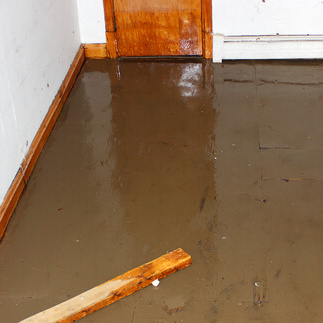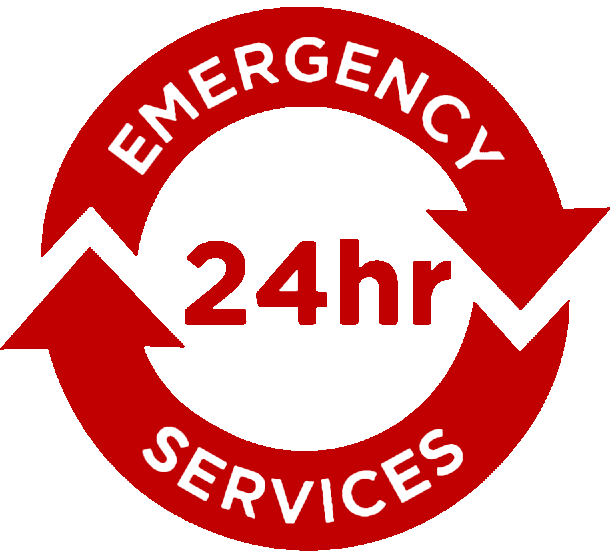
Slab Leaks
We don’t have to say it, but you already know that this year has proven to be very wet for Dallas and surrounding areas in the Metroplex.
As of January 1, 2023, DFW has seen more than 14 inches of rainfall. Now that Texas is officially saying “goodbye” to drought season, homeowners can welcome higher groundwater levels.
Recent storms like the rainfall that has doused DFW over the last weeks have helped raise groundwater levels. As groundwater rises, soil shifts, and the possibility of pipe leaks and bursts beneath your home becomes a reality.
Let’s examine how groundwater can threaten your plumbing and how this natural phenomenon may require slab leak detection from your local plumber.
How Can Groundwater Lead to a Slab Leak?
Before we get into the dangers of slab leaks, let’s explore how groundwater can create them.
Groundwater in soil that has been saturated by excessive rains could be pushed into your slab via hydrostatic pressure. That pressure could cause pipes to leak or even break.
Unfortunately, it’s hard to know when these types of leaks have occurred, and they often go undetected until you can point out some of the telltale signs of a slab leak.
Slab Leak Detection For Your Home
Fortunately, you don’t have to wait around for your home to display the worst signs of a slab leak to know you’ve got one. We’ve seen every sign and can attest that there are several red flags that point to a slab leak in your home.
If you hear the sound of water running under your basement or first floor, don’t ignore the warning signs. This is a slab leak! Aside from the sound of running water, you may feel warm or even “hot” spots under the floor as you walk across it.
If you feel hot spots, this is a very good indication of a hot water leak under the slab and is a plumbing emergency.
Total Flooding
If you’ve ignored the preliminary signs and the slab leak progresses, you may notice a pool of water or mud on the floor closest to the ground in your home.
If your first floor or basement floods for no obvious reason, you have a slab leak on your hands.
Don’t Forget to Check the Water Bill…
If your water bill goes up considerably, this often is a sign of a water leak.
A great way to determine a slab leak via your water meter is to check your water meter at a certain time, make sure no one uses any water for half an hour or so, and when you check the meter again, check to see if it’s moved. If it has, this means water is running or leaking somewhere on your property.
HOW DOES A PLUMBER PERFORM SLAB LEAK DETECTION?
Fixing a slab leak is much more complex than clearing out a kitchen sink drain or performing a shower repair.
Slab leak detection and the following repairs require the expertise of an experienced plumber. At Plumbing Dynamics, we specialize in slab leaks and ensure every step our process takes brings you one step closer to a safer, drier home.
Slab Leak Detection
Before we start repairs, we conduct a slab leak detection to locate the leak’s source and determine the damage’s extent. This lets us determine the solution approach we’ll take and helps us give you the most accurate estimate possible for the job.
Accessing the Leak
Once we identify the location of the leak, we need to gain access to the area beneath the slab. This might involve breaking through the concrete slab or creating a small access point, depending on the severity and accessibility of the leak.
Repairing the Leak
Gaining access to the leak leads directly to our swift repairs. We always use the appropriate methods based on the situation.
Some of the most common repair techniques we utilize include the following:
- Epoxy pipe coating – We apply an epoxy resin to the interior of a damaged pipe to seal the leak.
- Pipe re-routing – If the damaged pipe section is inaccessible or difficult to repair, we may reroute the pipe around the affected area to prevent further damage.
- Pipe replacement – In some cases, we may need to replace the damaged section of the pipe entirely. This can be a great entry into plumbing updates if your home has older piping that only becomes more prone to leaks and bursts over time.
How Long Does it Take to Repair a Slab Leak?
The duration of fixing a slab leak can vary depending on factors such as the complexity of the leak, the accessibility of the affected area, and the chosen repair method.
Simple repairs may take a few hours, while more extensive repairs that involve re-routing or replacing pipes could take several days. While many plumbers may use the presence of a slab leak to amp up their rates, our plumbers always go with the accurate repair timeline and ensure we complete your repairs in a timely manner and save you money where possible.
How Much Can a Slab Leak Repair Cost?
We can’t sugarcoat it; slab leaks are an expensive business. Repairing a slab leak in 2023 can cost between $1,200 and $3,500. Essentially, the longer you wait for repairs, the more expensive the solution will be and the more physical damage you face on your property.
Protect Your Slab Foundation Today
Aside from the major annoyance of repairing or replacing any carpeting, furniture, or prized possessions due to water damage, slab leaks can lead to major damage to your home and even its foundation.
If you suspect your foundation slab may have a water leak under it, don’t wait until you’re sloshing through water in your home. Let the plumbers at Plumbing Dynamics come out of your property, assess the damage with slab leak detection in Carrollton, TX, and get right to work on repairs.
Contact us today at 214-929-3431 to schedule your appointment!


